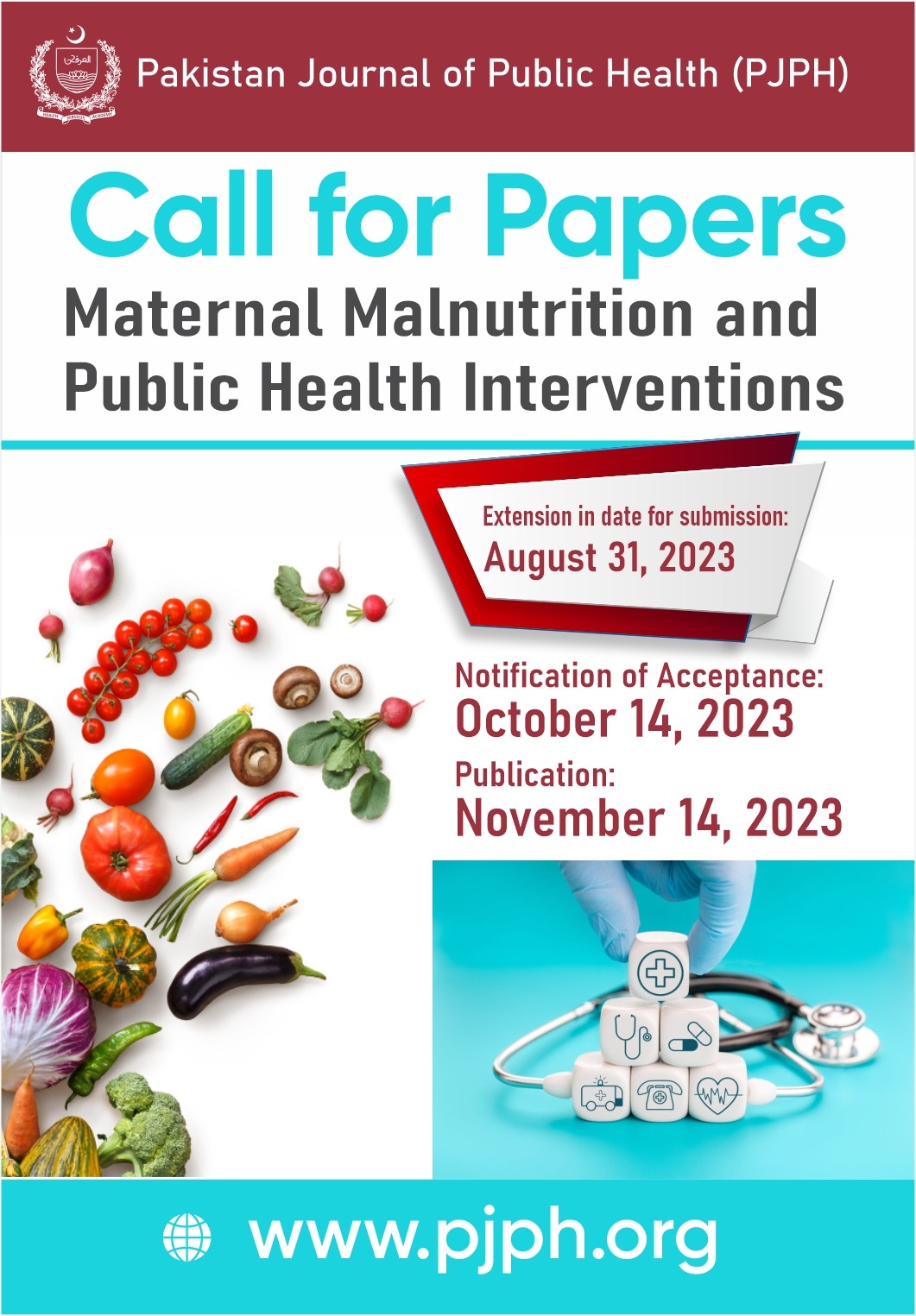CONTRACEPTIVE PREVALENCE RATE, UNMET NEED FOR FAMILY PLANNING AND ITS ASSOCIATED FACTORS AMONG WOMEN OF REPRODUCTIVE AGE GROUP
DOI:
https://doi.org/10.32413/pjph.v8i2.136Keywords:
Unmet need, contraceptive prevalence rate, total demand of family planningAbstract
Background: Family planning includes knowledge, services, attitude, policies and practices which enable individuals to decide whether they want to have child and allow them to avoid unwanted pregnancy. Pakistan with population of 195.390 million with estimated population growth rate as 1.89 is the sixth most populous country in the world. Our objectives were to assess the total demand of family planning, contraceptive prevalence rate, unmet need for family planning and factors associated with unmet need of family planning among women of reproductive age group.
Methods: We conducted this cross-sectional study on 355 females of reproductive age attending the out-patient department as patient or attendant. Data were collected using structured questionnaire after the participants' verbal consent.
Results: The prevalence of unmet need was 34%. The proportion of unmet need for spacing was 63.6% and for limiters it was found to be 36.3%. Contraceptive prevalence rate was 57%. Total demand for family planning was 92.1%.Almost all study participant had knowledge regarding at least one method of contraception. Unmet need of family planning was found to be significantly associated with age and education status of women. High unmet need was there in women with low education status (p=0.047) and older age group (p=0.003). Main reasons for not using contraceptive was family opposition both family and husband (66.9), and fear of side effects (17.3%).
Conclusion: More than one third females had unmet need which strongly points towards the strong influence of various socio demographic factors contributing towards the unmet need.






